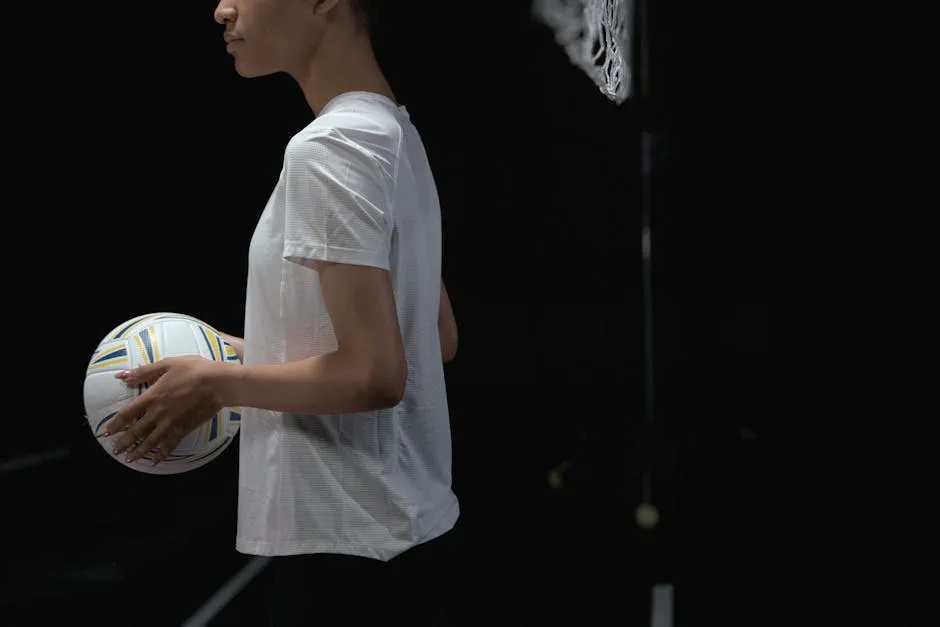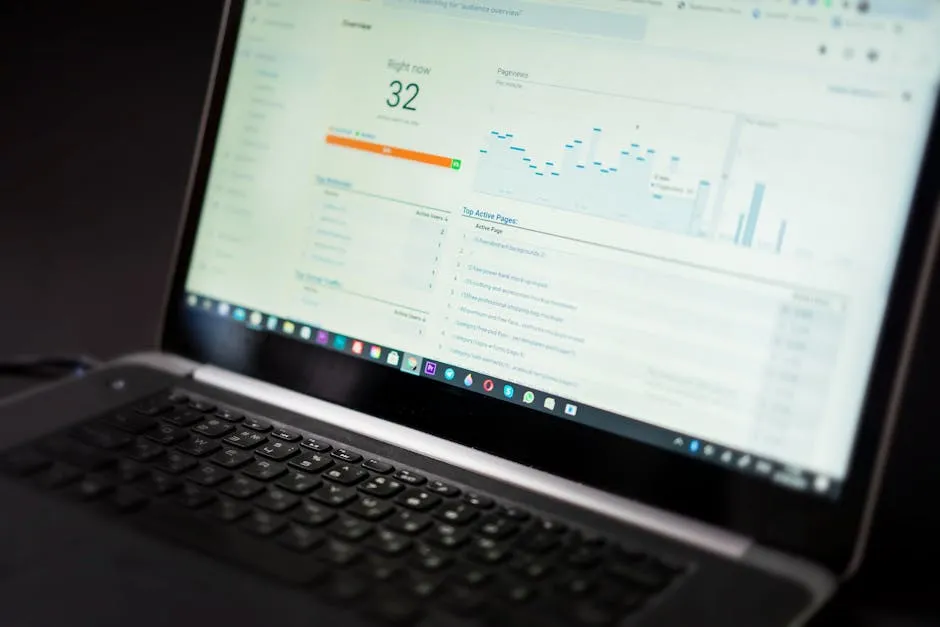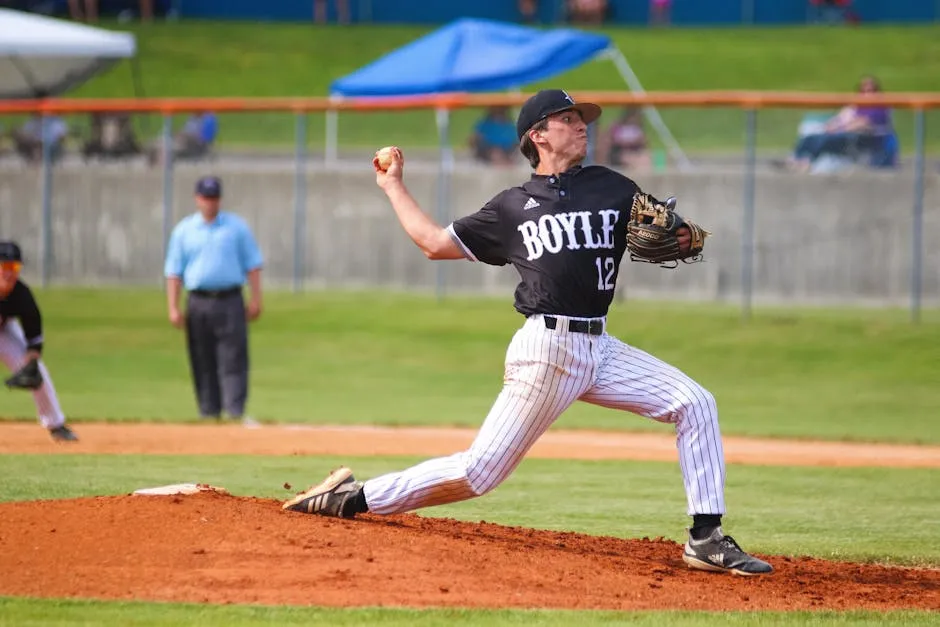Introduction
Statistics in NCAA softball are vital. They provide a window into a player’s performance, a team’s success, and the game’s evolution. Think of stats as the secret sauce that makes the game flavorful. Fans, players, and coaches rely on these numbers to gauge effectiveness, strategize, and appreciate the nuances of the sport.
For fans, statistics are like a treasure map. They uncover insights about favorite players and teams, making every game more engaging. For players, stats serve as a reflection of their hard work. They highlight strengths and areas for improvement, allowing athletes to focus their training effectively. Coaches use statistics to develop game strategies and to spot trends in performance, enhancing their team’s chances of winning.
Keeping updated stats is crucial. NCAA softball is dynamic, with stats changing almost daily during the season. Following these numbers not only keeps fans in the loop but also allows for deeper discussions about the game. Who’s hitting the most home runs? Which pitcher has the lowest earned run average (ERA)? These questions keep the excitement alive.
This article covers individual and team statistics, current leaders, and historical context. Whether you’re a die-hard fan, a player honing your skills, or a coach analyzing team performance, this comprehensive guide will illuminate the world of NCAA softball statistics. Get ready to swing into the stats!
And if you’re looking to enhance your game, check out the Rawlings Heart of the Hide Softball Glove. This glove is designed for serious players who want to make every catch count!

Understanding NCAA Softball Statistics
NCAA softball statistics encompass a variety of metrics that measure player and team performance. Understanding these stats is essential for anyone involved in the game.
Individual Statistics
Individual statistics focus on player performance. Key metrics include:
- Batting Average (BA): Measures a player’s hitting effectiveness. The higher the BA, the better the player is at getting on base.
- Earned Run Average (ERA): Determines a pitcher’s effectiveness by calculating the average number of earned runs allowed per seven innings pitched. A lower ERA indicates a stronger pitcher.
- Home Runs (HR): The number of home runs a player hits. It’s a measure of power and can be a game-changer.
Other metrics like on-base percentage (OBP) and slugging percentage (SLG) provide additional layers of context. They help evaluate a player’s ability to get on base and contribute offensively.
To enhance your hitting skills, consider the DeMarini CF Zen Softball Bat. This bat is crafted for maximum performance, ensuring you hit those home runs with ease!

Team Statistics
Team statistics aggregate individual performances to showcase overall team effectiveness. Important metrics include:
- Win-Loss Percentage (WL%): Indicates a team’s success rate. A higher percentage means more wins.
- Team ERA: Calculates the average earned runs allowed by the team. A lower team ERA signifies a strong pitching staff.
- Total Runs Scored: Reflects a team’s ability to produce offense. More runs typically correlate with more victories.
Importance of Statistics
Understanding these statistics is crucial for players and teams. They serve as benchmarks for success and areas needing improvement. Players can use stats to tailor their training and refine their skills. Coaches analyze these metrics to adjust strategies, ensuring the team remains competitive.
If you’re serious about leveling up your game, grab a SKLZ Hit-A-Way Training Equipment. It’s perfect for honing your hitting skills and making sure you’re always in top form!

Tracking and Reporting
Statistics are meticulously tracked and reported by the NCAA. Official websites and various sports analytics platforms provide real-time updates. This ensures that fans and professionals alike have access to the latest stats, making it easy to follow players and teams throughout the season.
In conclusion, a grasp of NCAA softball statistics is essential for appreciating the game. These numbers not only reflect individual and team performances but also enrich the overall experience for everyone involved. From fans cheering in the stands to players battling on the field, stats play a pivotal role in the dynamic landscape of NCAA softball.

Individual Statistics
When it comes to NCAA softball statistics, individual performance metrics shine the spotlight on players, allowing fans and coaches to assess their effectiveness. These statistics fall into three main categories: batting, pitching, and fielding. Each category has its own unique metrics that provide insights into player abilities.
Batting Statistics:
- Batting Average (BA): This measures a player’s hitting prowess. A higher BA reflects a player’s ability to get on base, with an average above .300 considered exceptional. For instance, as of June 6, 2024, Maryn Jordan leads with a remarkable .472 average. It’s like being the top chef in a cooking competition—everyone wants to know your secret recipe!
- Home Runs (HR): The number of home runs hit showcases a player’s power. Players like CC Wong and Jessica Clements, both of whom have hit over 15 home runs this season, are like the heavyweights of softball—delivering knockouts that can change the game’s outcome.
- Runs Batted In (RBI): This stat counts the number of runs a player drives in. It’s crucial for highlighting a player’s contribution to the team’s overall scoring. If a player can consistently bring others home, they’re a real asset, much like a dependable friend who always picks up the tab!
- On Base Percentage (OBP): OBP measures how often a player reaches base via hits, walks, or being hit by a pitch. This stat gives a broader picture than BA alone. A player with a high OBP, such as Ashley Trierweiler at .500, is like an elusive magician—always finding a way to escape to safety!
- Slugging Percentage (SLG): This gauges a player’s power, factoring in the type of hits. A player with a high SLG can change the dynamics of a game with their ability to hit extra-base hits. For context, Jess Oakland has an impressive .634 SLG—talk about making an impact!
- Significance of Batting Stats: Each of these stats plays a vital role in evaluating player performance. High averages and power numbers can lead to wins, while on-base stats can help set the stage for scoring opportunities. Essentially, they are the heartbeat of a team’s offensive strategy.
Understanding the importance of statistics in NCAA softball can significantly enhance your appreciation of the game. an introduction to statistical learning with python book length

Pitching Statistics:
- Earned Run Average (ERA): This metric calculates the average number of earned runs a pitcher allows per seven innings. A lower ERA indicates a more effective pitcher. NiJaree Canady from Stanford leads with a jaw-dropping .73 ERA, like a fortress standing tall against enemy attacks!
- Strikeouts (SO): This is the number of batters a pitcher strikes out. High strikeout numbers often reflect dominance on the mound. For example, Trinity Critelli has racked up 215 strikeouts this season—she’s the pitcher’s version of a rock star, leaving batters starstruck!
- Walks Allowed (BB): This stat shows how often a pitcher walks batters. Fewer walks generally mean better control and effectiveness. Julia Holt keeps her walks low, demonstrating that she knows how to keep her audience (batters) in check.
- Innings Pitched (IP): This measures the total innings a pitcher has thrown. It’s essential for assessing durability and stamina. Grace Vesco has pitched 210 innings this season, proving she can go the distance like a marathon runner!
- WHIP (Walks + Hits/Innings Pitched): WHIP is a critical stat that reflects a pitcher’s ability to keep runners off base. A lower WHIP indicates better performance. A pitcher with a WHIP below 1.00 is hard to come by, much like finding a unicorn in the wild.
- Importance of Pitching Metrics: These statistics are crucial for assessing a pitcher’s effectiveness and potential impact on games. A pitcher who can consistently minimize earned runs and keep opponents off the base paths is invaluable to their team.
- And to ensure you’re always prepared for the game, don’t forget to bring along a All-Star Softball Catcher’s Gear Set. Stay protected and look great while doing it!

Fielding Statistics:
- Fielding Percentage (FP): This measures a player’s defensive reliability. A high FP shows that a player can make plays consistently. Players like Lorraine Alo, with an FP of .980, are the anchors of their team’s defense, like a trusty ship’s anchor in stormy seas!
- Errors (E): This counts the mistakes a player makes in the field. Fewer errors signify solid defensive skills. Teams aim to keep their errors low, as each one can cost a game, just like a missed opportunity in a job interview!
- Putouts (PO): This tracks how many outs a player records. High putout numbers indicate a player is actively involved in defensive plays. Players like Shaylon Govan, who has tallied over 150 putouts, show they are always in the action, much like a dedicated fan at a concert!
- Assists (A): This measures how often a player helps record an out. High assist numbers are often seen in infielders and catchers. Victoria Altamirano shines with over 70 assists, proving that teamwork makes the dream work!
- Defensive Impact on Team Performance: Fielding statistics are essential for understanding a team’s overall performance. Solid defense can be the difference between a win and a loss, much like a good foundation for a skyscraper—without it, everything can come crashing down!
In summary, these individual statistics provide a comprehensive look at player performance in NCAA softball. Batting, pitching, and fielding metrics each tell a story of skill, strategy, and athleticism. Understanding these statistics not only enhances the enjoyment of the game but also deepens the appreciation for the players who make it all happen.

Team Statistics
Overall Team Performance Metrics
In the world of NCAA softball, team statistics are like the “ice cream sundae” of the data buffet—everyone loves a scoop of the good stuff! Here’s a breakdown of some crucial metrics that define a team’s performance.
- Team Batting Average (BA) is a staple stat. It represents the overall hitting success of a team. As of June 2024, Texas leads with an impressive .370 BA. This means they’re not just swinging for the fences; they’re making contact more often than a kid at a candy store! A higher BA often correlates with more runs scored, which leads to victories—unless you’re facing a team with a stellar pitching staff!
- Team Earned Run Average (ERA) is another critical metric. It measures how well a team’s pitchers prevent runs. Boston University currently tops this category with a jaw-dropping ERA of 1.41. This means their pitchers are like a brick wall, making it tough for opposing teams to score. A low ERA can be as comforting as a warm blanket on a chilly night, giving teams confidence as they head into games.
- Win-Loss Percentage (WL%) is the ultimate scoreboard. It shows how many games a team has won versus how many they’ve lost. For example, a team with a 25-5 record has a WL% of .833. This stat shapes the competitive landscape, as teams strive to improve their record and secure a favorable position for playoffs.
- Shutouts are the cherry on top. When a team’s pitchers manage to hold the opposing team scoreless, it’s a statement! It showcases dominance and often boosts morale. As of June 2024, Boston University has racked up multiple shutouts, proving they’re not just winning; they’re winning decisively!

Together, these stats shape the competitive landscape of NCAA softball. They provide a snapshot of how well a team is performing and can influence rankings, playoff seeding, and even recruitment efforts. Coaches analyze these metrics to tweak strategies, while players aim to elevate their contributions, ensuring continuous improvement.
Comparative Analysis of Top Teams
As of June 2024, NCAA softball is witnessing some fierce competition among the top teams. Texas, Oklahoma, and Boston University are leading the charge, showcasing their dominance through impressive performances.
- Texas, with a batting average of .370 and significant run production, has been a powerhouse. Their recent performance has seen them consistently score double digits, leaving opponents scrambling. They’re a team that can change the game in a heartbeat, like a magician pulling a rabbit out of a hat!
- Oklahoma is right on their heels with a .362 BA. Their pitching staff is equally impressive, consistently holding opponents to low run totals. This combination of hitting and pitching is what makes them a formidable opponent. When they step onto the field, it’s like watching a well-oiled machine at work!
- Boston University has also made waves with their incredible pitching, leading in ERA and showcasing their ability to shut down offenses. Their recent accomplishments include a string of shutouts, making them a tough opponent in any matchup. They’re the “silent but deadly” type—letting their stats do the talking!

These teams not only excel in individual metrics but also create a narrative of excellence in the NCAA softball landscape. Their performances not only shape this season’s championship race but also set the stage for recruitments and future matchups.
NCAA Softball Leaders
Current Season Leaders (as of June 6, 2024)
In the hunt for individual accolades, a few players have stood tall this season.
Batting Leaders
| Rank | Name | Team | BA |
|---|---|---|---|
| 1 | Maryn Jordan | Howard | .472 |
| 2 | CC Wong | Wichita St. | .470 |
| 3 | Jessica Clements | Cal Poly | .464 |
| 4 | Ashley Trierweiler | Grand Canyon | .456 |
| 5 | Jess Oakland | Minnesota | .452 |
Maryn Jordan is like the superstar of the season, leading with a sparkling .472 batting average. Not only is she getting on base, but she’s also hitting for power, making her a dual threat!
To keep your stats organized and handy, consider using a Softball Scorebook. It’s perfect for tracking all those impressive stats!

Pitching Leaders
| Rank | Name | Team | ERA |
|---|---|---|---|
| 1 | NiJaree Canady | Stanford | .73 |
| 2 | Maddia Groff | Southern Illinois | 1.11 |
| 3 | Karlyn Pickens | Tennessee | 1.12 |
| 4 | Lexi Kilfoyl | Oklahoma St. | 1.20 |
| 5 | Kasey Ricard | Boston U. | 1.23 |
NiJaree Canady is turning heads with a jaw-dropping ERA of .73. It’s no wonder she’s the go-to pitcher for her team—batters fear her like kids fear broccoli!
These leaders not only shape their teams’ fortunes but also influence the broader narrative of the NCAA softball season. Fans are glued to the stats, eagerly watching as these players strive for greatness.
If you want to train like the pros, consider investing in a Heater Sports Portable Softball Pitching Machine. It’s a game-changer for your practice sessions!

In conclusion, the statistics from both team and individual performances provide a rich tapestry that enhances the enjoyment of NCAA softball. Teams and players are always chasing those elusive records while fans revel in the excitement of each game, all driven by the numbers that define the sport.
Historical Leaders
NCAA softball has a rich history filled with remarkable achievements. Over the years, several players have etched their names into the annals of the sport by posting jaw-dropping statistics. For instance, Jill Justin holds the record for the highest career batting average at .467. Talk about making a solid impression! Not to forget Alison McCutcheon and Stacey Nuveman, both of whom boasted averages of .466. These players didn’t just hit the ball; they smashed it into the history books!
When it comes to pitching, legends like NiJaree Canady, who currently leads with an ERA of .73, have set the bar high. Canady’s ability to keep opponents at bay is akin to having a personal bodyguard for the plate. The impact of these record-breaking performances extends beyond statistics; they inspire new generations of players.
And if you want to delve deeper into the history, consider picking up a copy of NCAA Softball: A History of the Game. It’s a fascinating read for any fan!
All-Time Greats
Among the all-time greats in NCAA softball, maintaining a .400 batting average is a feat few achieve. This exclusive club includes names like Natasha Watley and Kacie Burnett, who made their mark with averages of .450 and .460, respectively. That’s not just good; that’s legendary!
On the pitching side, players like Chelsea Bramlett have made headlines with stellar career ERAs. With numbers like 1.12, these pitchers have demonstrated exceptional skill and control, making batters feel like they’re facing a brick wall. And let’s not forget the strikeout kings! Trinity Critelli’s impressive tally of 215 strikeouts this season shows just how dominant she can be.
These athletes have set the standard for excellence, proving that hard work and dedication yield remarkable results. Their legacies encourage current and future players to strive for greatness, one pitch and one swing at a time.

Conclusion
Tracking NCAA softball statistics is crucial. These numbers reveal the heartbeat of the game. They help fans understand player performance and team dynamics. The stats illustrate who’s hot and who’s not, making every play more exciting. For coaches, statistics are invaluable tools. They inform strategic decisions, helping teams adjust their game plans. Players can identify areas for improvement, fine-tuning their skills for peak performance.
Fans, you can engage with these stats! Dive into batting averages, home runs, and earned run averages. Understanding these numbers enhances your appreciation for the game. You’ll be able to discuss your favorite players with confidence. Plus, tracking player stats can make watching games feel like a thrilling game of chess, with every move calculated and crucial.
If you’re planning to hydrate during those long games, make sure you have a reliable Hydro Flask Water Bottle. It keeps your drinks cold and your spirits high!
As the sport evolves, so too will the statistics. Advanced analytics are on the rise. New metrics like exit velocity and launch angle are gaining traction. These stats provide deeper insights into player performance. Expect to see more data-driven discussions in the stands and online. The future looks bright for NCAA softball statistics, and it’s a great time to be a fan!
Embrace the stats, enjoy the game, and keep an eye on emerging players. The numbers are more than just digits; they tell the story of perseverance, skill, and the love of the game. So, let’s keep scoring those runs—and tracking those stats!
FAQs
What is a good batting average in NCAA softball?
A batting average above .300 is considered good. Players hitting .400 are exceptional, joining the elite ranks.
How are NCAA softball statistics compiled?
Statistics are meticulously tracked by official NCAA sources. They gather data from games and report it on various platforms.
Why are stats important for players and coaches?
Stats help players identify strengths and weaknesses. Coaches use them for strategy, making informed decisions to improve team performance.
What are some common misconceptions about softball statistics?
Many think batting average is the only indicator of performance. However, on-base percentage (OBP) and slugging percentage (SLG) also provide critical insights.
Please let us know what you think about our content by leaving a comment down below!
Thank you for reading till here 🙂
All images from Pexels




